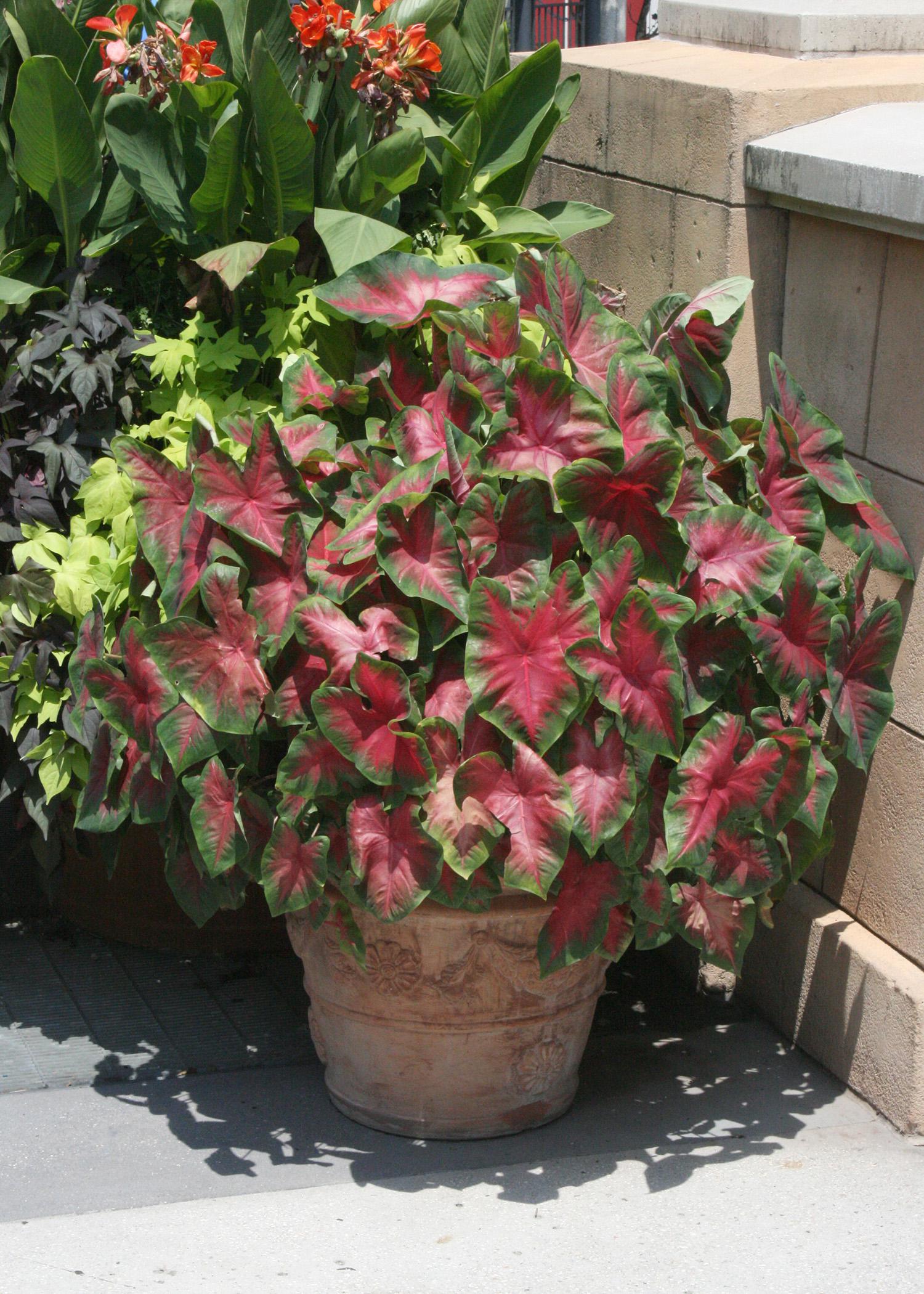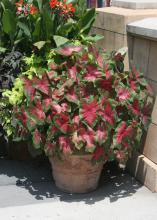Information Possibly Outdated
The information presented on this page was originally released on August 4, 2014. It may not be outdated, but please search our site for more current information. If you plan to quote or reference this information in a publication, please check with the Extension specialist or author before proceeding.
Caladiums stand out in landscapes, containers
Colorful caladiums at a popular theme park fascinated me on a recent trip to Florida. They were everywhere I looked.
Some caladiums neatly defined border edges or were mass planted in beds, but they were not all planted in the usual landscape places. The caladiums were planted in containers of every shape, size and color, and some were even in hanging baskets.
Many were placed right out in the full sun. There are quite a few selections advertised as full-sun tolerant, but I prefer the look of caladiums in at least partial shade because of better color development. Still, I could not argue about how these caladiums were being displayed. The uses certainly reinforced with me that caladiums are very versatile and tolerant of many growing styles.
Most of us grow caladiums because of their colorful leaves that can range from solids to flamboyant color combinations. My research revealed over 1,000 named selections of caladium, but I’m sure there are even more.
Caladium foliage is also very distinctive. The midribs on the leaves provide streaks and flashes of color, and they often provide high contrast with the rest of the foliage. Foliage colors include reds, pinks, whites and greens -- all in various shades and combinations. Most foliage is heart-shaped with long petioles, and it is considered fancy leaved. Caladiums can reach heights of up to 30 inches.
Even during the hottest periods of the summer season, caladiums are colorful additions to the landscape. Consistent moisture is the key during these hot summer months. Be sure to water your caladium containers every day.
Many garden centers offer caladiums already growing in containers, which makes it easy to add these colorful plants to your landscape.
Plant these transplants about 12 inches apart and no deeper than the top of the pot. These can be effective as a specimen, but I like caladium massed planted, so bring several home. Caladiums are grown from tubers that are planted in the spring after all chance of frost is passed. Plant tubers shallowly in well amended soil about 6 inches apart.
Caladiums are sensitive to cold weather and should be considered annuals except in the coastal areas of Mississippi with milder winters. Mississippi gardeners can save the tubers and replant them the following year. This task is easy with caladiums grown in containers. Be sure to dig the tubers in the fall when the soil temperatures go below 60 degrees. Lightly brush the soil off and remove any foliage. Pack the tubers in dry peat moss and store dry at about 60 degrees. Be sure to sort and label them by cultivar.
Caladiums are tropical foliage plants that were discovered in the Amazon basin of South America. About 95 percent of the caladiums in our landscapes come from Florida, but these plants are right at home in our Mississippi gardens and landscapes. We have always known they are perfect for planting in front of the green background of foundation shrubs. Now we know they look great in containers, too.
Even though it’s probably too late to plant caladiums this summer, be sure to grow a few in containers next summer.








